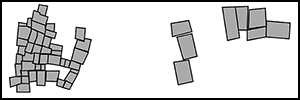Article contents
Settlement layout and social organisation in the earliest European Neolithic
Published online by Cambridge University Press: 15 September 2016
Abstract

The internal layout of early settlements can provide insight into social organisation and the processes of Neolithic expansion into Europe. Analysis of variables describing 71 sites revealed a spectrum extending between two distinct settlement types that can be regionally and chronologically situated. The very early ‘Anatolian village’ in the south-east exhibits multi-level organisation, reflected in concentrated residence and temporal stability; the younger (post 6000 BC) ‘Balkan village’ in the north-west represents a new model with less centralised control of space and a less permanent layout. Between these types is a transitional domain of more heterogeneous, and ever-changing settlement layouts, which is characterised as a ‘third space’ of hybridised traditions.
- Type
- Research
- Information
- Copyright
- Copyright © Antiquity Publications Ltd, 2016
References
- 4
- Cited by




